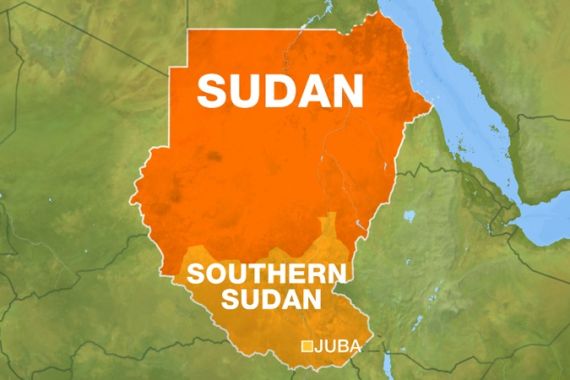Country Profile: South Sudan
A look at the politics, economy and foreign relations of the newest state in Africa.

South Sudan broke away from Sudan on July 9 2011 and became Africa’s youngest nation.
Independence followed a referendum in January 2011, in which nearly 99 per cent of South Sudanese voted in favour of secession. The referendum, in turn, was the result of the 2005 Comprehensive Peace Agreement, which ended decades of civil war between the two sides.
The new country comprises 10 of Sudan’s 25 states from the regions of Bahr el Ghazal, Equatoria and Upper Nile. Several “disputed regions” on the border between north and south Sudan, including Abyei, are supposed to hold referendums to determine whether they will remain in Sudan or become part of South Sudan.
South Sudan has faced a number of challenges shortly after independence. Its economy is dominated almost entirely by the oil sector, poverty is widespread and most of the country lacks infrastructure. The political system is dominated by one party, the Sudan People’s Liberation Movement, and much of government revenue is devoted to paying salaries for an army which the United Nations says is twice the size it needs to be.
South Sudan has been an autonomous region with its own government since the signing of the Comprehensive Peace Agreement (CPA) in 2005.
The new country is in principle a democracy, with a president, a unicameral legislature and an independent judiciary.
In reality, its politics have been entirely dominated by the SPLM, the political wing of the rebel group which fought a decades-long civil war against the north. John Garang, the former head of the SPLM, served as South Sudan’s first president until he was killed in a helicopter crash in July 2005.
The current president, Salva Kiir, took over after Garang’s death. He was re-elected with 93 per cent of the vote in 2010.
Parliamentary elections in April 2010 were marred by widespread reports of intimidation and fraud, and left the SPLM with a sizable majority in the 170-seat legislature.
The SPLM’s domination of southern politics was actually mandated by the CPA, which required that 70 per cent of seats in the legislature be allocated to the party. It also gave the SPLM wide control over state-level governments. Other opposition parties are extremely weak.
The party has benefitted from this arrangement internationally, where it is often treated as indistinguishable from the southern government as a whole.
“Southern opposition parties argue that there is little or no distinction between [government of South Sudan] and SPLM finances,” the International Crisis Group wrote in a May 2011 report, “and that monetary support from abroad to both the party and the government has served to solidify the stranglehold of this ‘darling of the West'”.
South Sudan’s economy, shattered after decades of war, is dominated almost entirely by the oil industry.
The south produced more than three-quarters of Sudan’s 500,000 barrels per day of oil and 98 per cent of southern government revenue comes from the petroleum sector. But the south does not have the infrastructure to refine the oil, or to ship it to international markets. Both of those functions are performed at ports in the north.
Both sides are trying to negotiate their share of post-independence oil revenues. South Sudanese leaders have promised in the past that their government will keep 100 per cent of revenue, but the south’s reliance on the north makes that impossible. Omar al-Bashir, the president of Sudan, has promised to shut off oil pipelines through the north if the south refuses to pay.
South Sudan, which suspended oil production in January 2012, accusing Sudan of “stealing” its oil, was expected to receive a greater share of revenues after independence, but the exact details of an agreement with Khartoum are still being discussed.
Outside the oil industry, most people in South Sudan are employed either by the government – particularly the security forces – or in the agricultural sector. The region’s exports are limited, owing in part to the lack of infrastructure: South Sudan has just 60km of paved roads and electricity is provided only intermittently by generators.
Trade in South Sudan has typically been with its neighbours in East Africa, rather than with the north.
Much of Juba’s government revenue goes to maintaining the military; southern officials estimate that between 150,000 and 200,000 people – in a region of 20 million – are on the army’s payroll. The United Nations urged southern officials to halve the army after independence.
Sudan opened an embassy in Juba after independence, as did Egypt, Ethiopia and the US. About a dozen new embassies opened in the weeks following July 9.
Kenya and Uganda, two of South Sudan’s neighbours to the south, immediately recognised the new country; so did the African Union.
Even before independence, South Sudan had offices in several countries; missions in Washington, Nairobi and Addis Ababa issued “travel permits” which could be used to enter Juba without a Sudanese visa.
The new country has representation in eight African capitals, in addition to the United States, Canada, China, Australia, the United Kingdom, Belgium and Norway.
Juba also plans to open a mission in the United Arab Emirates, a country which it hopes will become a source of investment dollars in the future.
China is currently the largest oilfield operator in South Sudan and has pledged to maintain friendly ties with the north. Bashir visited Beijing in late June – as did several high-ranking South Sudan officials in recent months.